All the tips you need to successfully keep and breed the Gold Angelfish in a community tank, while explaining the reasons why it’s a beloved species.
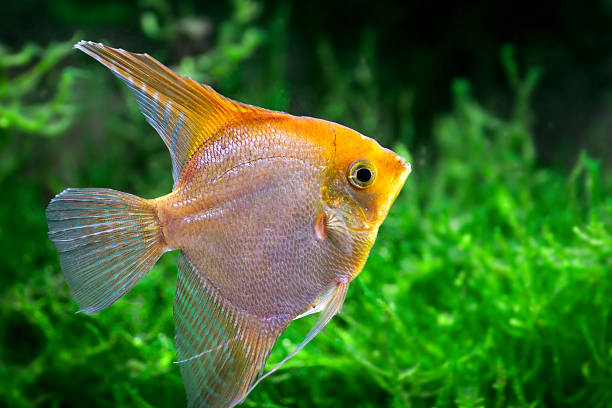
Mastering the Art of Gold Angelfish Care
The stunning Gold Angelfish is one of those ornamental fish you can’t ignore even if you tried. It stands out of many popular varieties of Angelfish because of its physical characteristics and unique needs.
If you need a new star for your tank, this shimmering fish species is just right. Beyond its striking looks, this radiant aquatic beauty has a friendly and calm personality that makes it an ideal tank mate for other peaceful species.
Are you ready to add this golden aquarium fish to your tank? Then, read this complete guide and arm yourself with the tools for maintaining this majestic freshwater dweller.
Quick Sidenote: Do you want to watch this article instead of reading it? Checkout the highlight video below from our YouTube Channel (Or read the more detailed article below), be sure to Subscribe For More Great Fishkeeping Content:
Origins and Historical Significance
The Gold Angelfish origin traces back to the South American Amazon basin, which is home to many freshwater Angelfish species. Although it has an Angelfish lineage, this golden beauty has a selective fish breeding history.
In the late 1900s, fish traders searched for ways to improve their trade, so they experimented with selective breeding. They paired several species to create new fish with unique physical traits from coloration to body type.
These aquatic breeding techniques bore the vibrant Gold Angelfish alongside other popular ornamental fish species, but today, we’re focusing on the former. Keep reading to learn why the Gold Angelfish is one of the top picks for hobbyists worldwide.
Captivating Physical Characteristics

The first thing you’ll notice about this species is its physical characteristics because the Gold Angelfish’s appearance is captivating. It has a vibrant gold hue with a yellow undertone, which varies in intensity. So, sometimes, this species looks like a deep gold while others have a pastel golden-yellow tone.
The Gold Angelfish also has an elegant fin structure like other Angelfish, with longer dorsal and anal fins and wide caudal fins. At full length, this species measures about 6 inches without their fins and 8 inches with their fins.
Other distinctive angelfish traits you’ll also find in this golden variant include expressive eyes, rounded heads, and small mouths.
Seeing these physical characteristics, you can understand how the Gold Angelfish became an aquarium showpiece fish. But with beauty comes a responsibility on the caregivers to preserve these features.
Comprehensive Care Guidelines for Gold Angelfish
Luckily for you, the Gold Angelfish care essentials aren’t very different from regular Angelfish needs except for some modifications. Your primary priority is maintaining your fish’s health both internally and externally.
Ensure your tank has optimal water conditions to give your pets a conducive living environment. Preserving fish color and physical features, which are the selling point for the Gold Angelfish, becomes easier with the right living conditions.
What is the ideal water condition for the Gold Angelfish?
- Temperature: 76-82℉, this temperature should be cool but not cold.
- Hardness: 3 – 8 dKH, moderate hardness.
- pH Level: 6.5 – 7.5, which is slightly acidic to normal. Although your Gold Angelfish can survive within this range, ensure stability of whichever pH level you set.
- Filtration System: Use a single or double canister external filter or internal sponge filter, depending on your tank size, to help keep it clean. It’ll speed up the nitrogen cycle and convert harmful waste to beneficial ones.
I’ll highlight their internal health care later in this guide, but first, let’s look at the ideal aquarium care routine to preserve these water conditions.
Change 20 – 30% of your tank water weekly for small tanks and bi-weekly or larger tanks to prevent toxin buildup. Also, clean leftover food and remove dead plants if they’re part of the aquarium decor.
Crafting the Ideal Tank Environment
When crafting the perfect fish habitat for your Gold Angelfish, you must consider its origins, which is why I started this guide with a brief history and its significance.
Your Gold Angelfish tank setup should be a replica of the South American Amazon Basin. That includes the water conditions and decor. We’ve covered the first part already, so let’s focus on the ideal aquatic tank decor and tank size.
Tank Size
Get a tall tank to accommodate the Gold Angelfish’s triangular body and ensure it holds at least 20 gallons of water per single fish. For every new fish, add ten more gallons to give them enough space for marking territories and moving.
Aquatic Tank Decor
When choosing decor and substrate that match the Amazon Basin, select only safe pieces that won’t harm your Gold Angelfish’s body. Use sand, fine gravel, or smooth pebbles for your substrate. Then, add plants, whether live or artificial, with rocks and driftwood for hiding spots.
Lighting

Install moderate lighting that mimics a 12-hour cycle to give them a healthy routine. You can use bright lights to boost their pigmentation, but ensure there’s a shade to avoid direct reflections that cause burns. You can use driftwood, rocks, or plants as the light shades.
I must warn you that premium fish care goes beyond setting up the ideal tank, although that’s the foundation. You must also provide a proper diet, practice health care and safe reproduction, and carefully select the tank mates for peaceful coexistence.
Feeding and Nutrition Tips

The Gold Angelfish diet is omnivorous. That means they eat plant matter and live foods. This dietary need makes it easy for beginners to care for them. A balanced fish diet will combine high-quality pellets and flakes with live, freeze-dried, and frozen foods.
Examples of color-enhancing fish food for your Gold Angelfish are Omega One Color Defiant and TetraColor flakes, New Life Spectrum pellets, Freeze-dried Bloodworms, and Gel foods.
If you’d rather get other brands, search for foods with carotenoids like vegetables, spirulina, algae, and Beta-Carotene vitamins. The vitamins are good for nutritional fish care.
For more on feeding your aquatic pets check out The Ultimate Guide to Fish Food: Pros and Cons & Best Choices!
Feeding Frequency
Feed your adult Gold Angelfish two to three times daily in portions they can finish within 2 minutes. Portioning the food prevents waste and obesity, which can lead to serious health complications.
Health and Disease Prevention
These Gold Angelfish health tips will save your pets from severe illnesses, so please pay attention.
Firstly, you must understand that this species is prone to common fish illnesses and other peculiar diseases based on its genetics and physical traits.
The first signs of fish illness typically appear on their bodies but also watch out for their moods changing. That’s why you must observe your pets daily and note changes in normalcy, whether it’s their feeding habits or social interactions.
For better aquatic health management, check out these common diseases, their symptoms, and treatment.
White Spot (Ich)
- Signs: Grainy, salt-like white spots on the body from the skin to the gills and fins. Movements against tanks and decor to itching.
- Cause: Protozoan Parasite in poor-quality water.
- Treatment: Increase water temperature. Use Anti-Ich creams and formalin. Add aquarium salt to the water in the recommended dosage on the package.
For more details checkout our article on How to Treat Ich Outbreaks in Your Freshwater Fish!
Fin Rot
- Signs: Fraying, discoloration, deterioration of fins. Reduced activities due to discomfort in swimming.
- Cause: Poor Water Quality and Untreated Injury.
- Treatment: Change the water. Apply broad-spectrum antibiotic creams on the injury. Apply Fin rot creams like Melafix.
Velvet
- Signs: Rusty and Dusty gold skin tone. Laziness.
- Cause: Protozoan Parasite.
- Treatment: Copper-based medication. Increase temperature to speed the parasite’s life cycle.
Dropsy
- Signs: Swollen Abdomen. Raised scales. Laziness. Loss of Appetite.
- Cause: Bacterial Infection.
- Treatment: Anti-bacterial treatment. Epsom salt bath to reduce swelling. Change water.
Maintaining fish vitality is easy when you practice basic fish disease prevention like maintaining optimal water conditions, clean tanks, feeding your Gold Angelfish a balanced diet, and quarantining new fish before introduction.
We recommend using a master test kit like the one form amazon linked below to frequently test your water parameters.
Successful Breeding Process for Gold Angelfish
Not every aquatic hobbyist can boast of successful fish breeding because it requires dedication and special tank requirements. If you’re ready to join the exclusive group of fishkeepers with thriving Gold Angelfish breeding tanks, then follow these tips –
Breeding Tank
Get a separate tall tank that holds about 30 – 45 gallons of water for your breeders. Add a spawning surface for the female to lay her eggs. It can be a large flat saucer, flat rock, or broad lead.
Make the water temperature slightly warmer than regular 80 – 84℉ to prepare the female’s body for spawning.
Breeding Pair
Choose one adult female and male in good health as the breeding pair. The male chases the female around the tank until she finds a hiding spot to lay her eggs comfortably.
This video has been very helpful in identifying the sex of angelfish, I highly recommend it:
Reproductive Fish Care (Spawning)
Spawning Angelfish isn’t complicated. The female will lay the eggs on the flat surface while the male Gold Angelfish fertilizes them. Within two to three days, the eggs will hatch, and your new fry will be ready for life outside their yolks.
Gold Angelfish Fry Care
Gold Angelfish fry first feed on their yolk sac within the first few days of their life. Then, they’ll need you to feed them infusoria while they grow larger. As they form their physical features, they’ll grow more visible mouths that can now eat powdered flakes or crushed pellets specifically made for Fish Fry. Ensure you feed them a balanced diet if you care about enhancing the fry’s color, so include microworms and baby brine shrimps in their food.
Reproductive Fish Care
Adjust your water parameters to prepare your fry for life in their new tank. Quarantine your new Gold Angelfish for about two weeks before introducing them into the new tank.
Typically, fish owners have a grow-out tank for their pets, but you can convert your breeding tank to one after hatching. Also, note that all fry won’t grow at the same pace, so you must separate larger ones from the small fry to prevent predation.

If you want a peaceful aquatic coexistence between your Gold Angelfish and other species, you must choose the right tank mates.
When you observe social fish interactions, you can tell the leader from the followers and Gold Angelfish are at the top of their communities. So, when choosing tank mates, avoid other dominant species if you don’t want a fight over territories and positions.
The best test for aquarium fish compatibility is three-fold:
- Temperament
- Environmental Needs
- Physical Characteristics
Suitable tankmates for Gold Angelfish are Corydoras Catfish, Tetras, and Gouramis, while incompatible tankmates are small and aggressive fish.
Conclusion
We’ve come to the end of this guide, and I’ve given you the ultimate advice on maintaining gold angelfish. You shouldn’t have any problem elevating your aquarium aesthetics with this majestic species.
Remember that when following the aquarium beauty tips when setting up your tank as I shared earlier, you shouldn’t focus only on the decor but also consider the water conditions. Keeping your pets in a similar environment to their natural habitat is good for their mental and physical health.
Good luck welcoming your new pet to its new home.



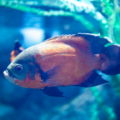

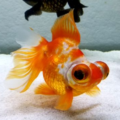
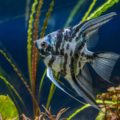




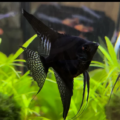

1 thought on “The Golden Majesty: A Complete Guide to Gold Angelfish Care ”